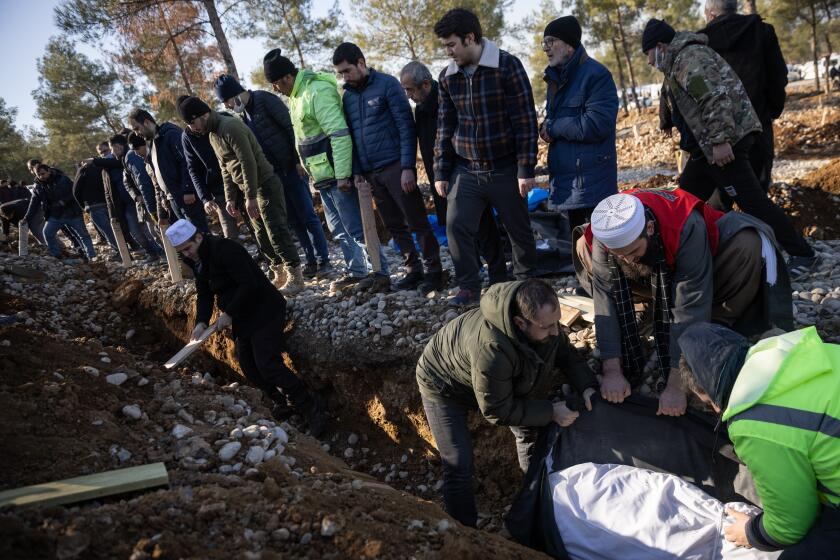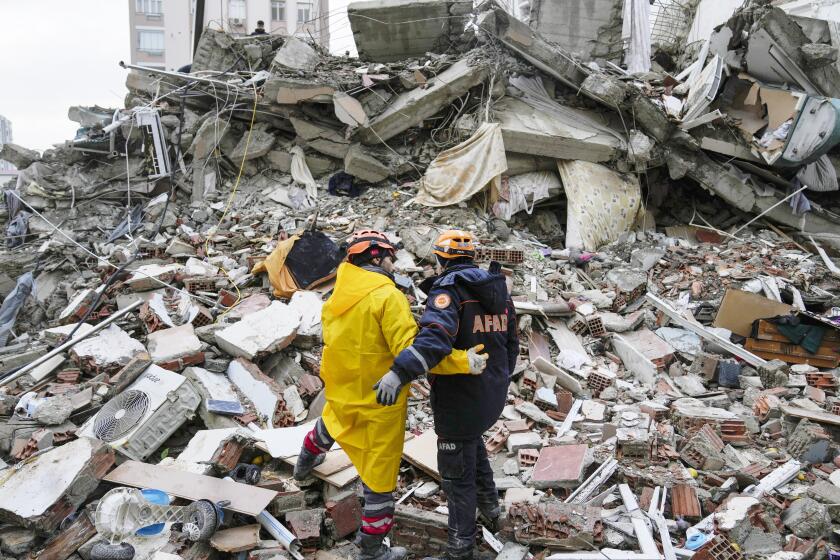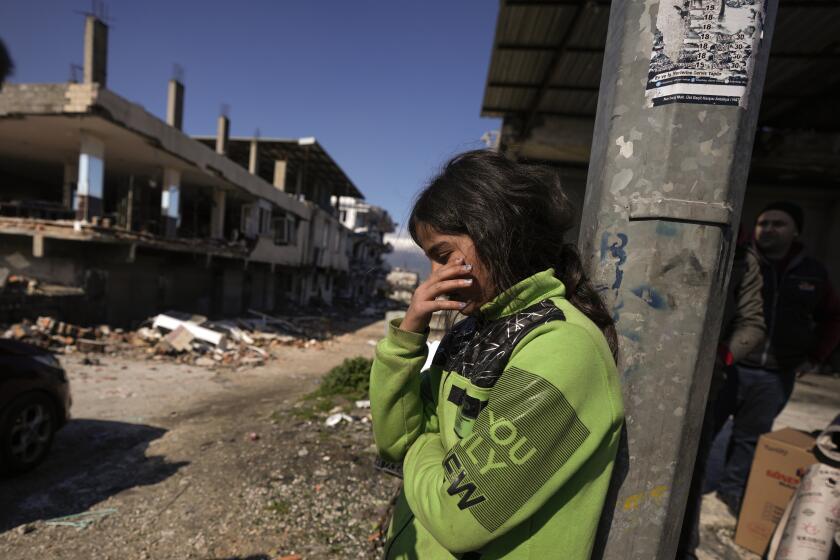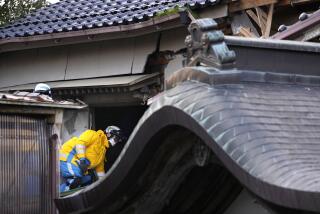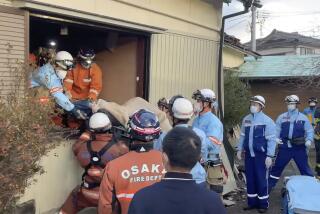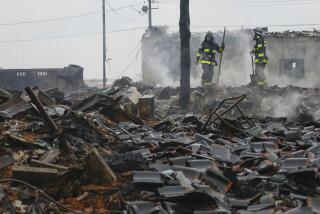Turkey arrests contractors tied to collapsed buildings 6 days after quakes
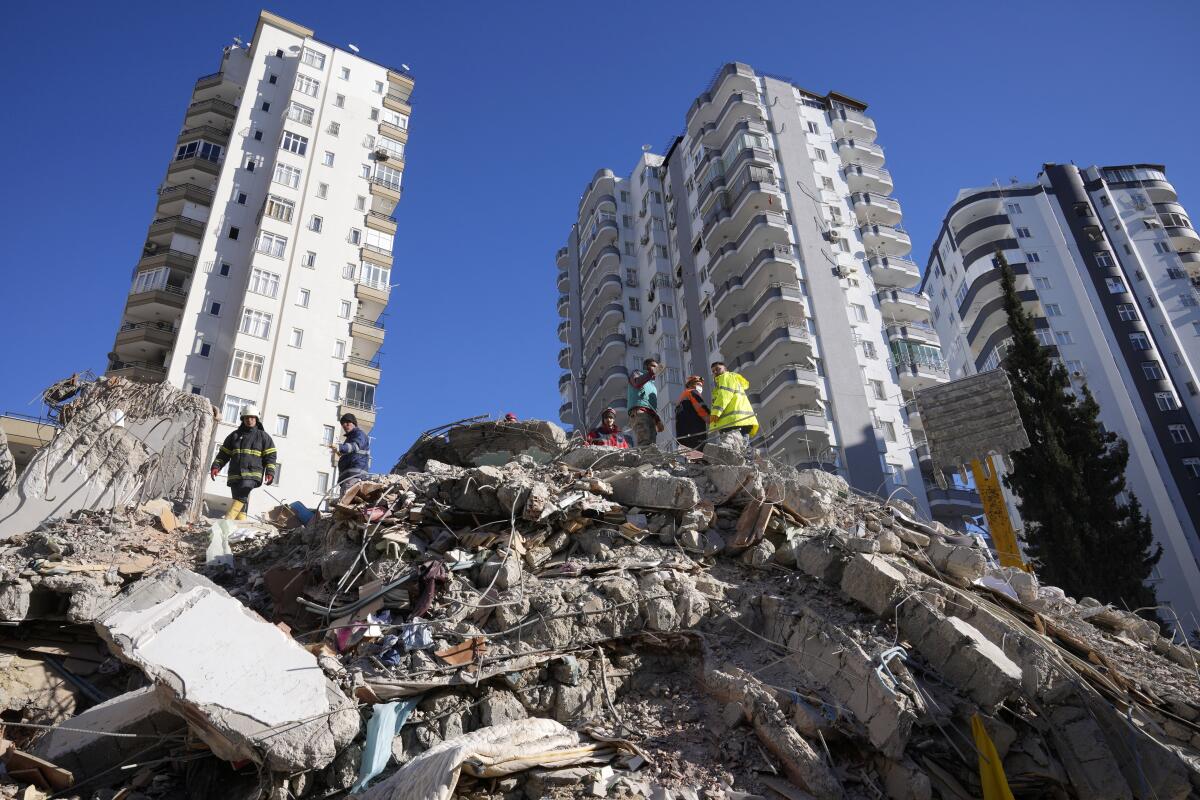
ANTAKYA, Turkey — As rescuers still pulled a lucky few from the rubble six days after a pair of earthquakes devastated southeast Turkey and northern Syria, Turkish officials detained or issued arrest warrants for some 130 people allegedly involved in the construction of buildings that toppled down and crushed their occupants.
The death toll from Monday’s quakes rose to 33,185 — with an additional 80,000-plus injured — as of Sunday morning and was certain to rise as bodies kept emerging.
As despair also bred rage at the agonizingly slow rescue efforts, the focus turned to who was to blame for not better preparing people in the earthquake-prone region that includes an area of Syria that was already suffering from years of civil war.
Even though Turkey has, on paper, construction codes that meet current earthquake-engineering standards, they are too rarely enforced, explaining why thousands of buildings slumped onto their side or pancaked downward onto residents.
Turkish Vice President Fuat Oktay said that warrants have been issued for the detention of 131 people suspected of being responsible for collapsed buildings.
Turkey’s justice minister has vowed to punish anyone responsible, and prosecutors have begun gathering samples of buildings for evidence of materials used in constructions. The quakes were powerful, but victims, experts and people across Turkey are blaming bad construction for multiplying the devastation.
Excavators dig out 200-foot trenches in southern Turkey to bury the bodies of earthquake victims. The death toll rises to more than 20,000.
Authorities at Istanbul Airport on Sunday detained two contractors held responsible for the destruction of several buildings in Adiyaman, the private DHA news agency and other media reported. The pair were reportedly on their way to Georgia.
Two more people were arrested in the province of Gaziantep, suspected of having cut down columns to make extra room in a building that collapsed, the state-run Anadolu Agency said.
A day earlier, Turkey’s Justice Ministry announced the planned establishment of Earthquake Crimes Investigation bureaus. The bureaus would aim to identify contractors and others responsible for building works, gather evidence, instruct experts including architects, geologists and engineers, and check building permits and occupation permits.
A building contractor was detained by authorities Friday at Istanbul airport before he could board a flight out of the country. He was the contractor of a luxury 12-story building in the historic city of Antakya, in Hatay province, the collapse of which left an untold number of dead.
The detentions could help direct public anger toward builders and contractors, deflecting attention away from local and state officials who allowed the apparently substandard constructions to go ahead. Turkish President Recep Tayyip Erdogan’s government, already burdened by an economic downturn and high inflation, faces parliamentary and presidential elections in May.
Survivors, many of whom lost loved ones, have turned their frustration and anger also at authorities. Rescue crews have been overwhelmed by the widespread damage that has impacted roads and airports, making it even more difficult to race against the clock.
Erdogan acknowledged earlier in the week that the initial response has been hampered by the extensive damage. He said the worst-affected area was 310 miles in diameter and was home to 13.5 million people in Turkey. During a tour of quake-damaged cities Saturday, Erdogan said a disaster of this scope was rare, and again referred to it as the “disaster of the century.”
The flaws of non-ductile concrete construction are found across California, with many buildings having not been evaluated or retrofitted and at risk of collapse in a serious earthquake.
Rescuers, including crews from other countries, continued to probe the rubble in hope of finding additional survivors who could yet beat the increasingly long odds. Thermal cameras were used to probe the piles of concrete and metal, while rescuers demanded silence so that they could hear the voices of the trapped.
Two sisters were removed from the wreckage on Sunday in the city of Adiyaman, 153 hours after the quake, according to HaberTurk television, which also broadcast the live rescue of a 6-year-old boy removed from the debris of his home in Adiyaman. The child was wrapped in a space blanket and put into an ambulance. An exhausted rescuer removed his surgical mask and took deep breaths as a group of women could be heard crying in joy.
Turkey’s health minister, Fahrettin Koca, posted a video of a young girl in a navy blue jumper who was rescued. “Good news at the 150th hour. Rescued a little while ago by crews. There is always hope!” he tweeted.
The efforts of a team of Italian and Turkish rescuers also paid off when they removed a 35-year-old man from the wreckage in the hard-hit city of Antakya. The man, Mustafa Sarigul, appeared to be unscathed as he was being transported on a stretcher to an ambulance, private NTV television reported.
Overnight, a child was also freed in the town of Nizip, in Gaziantep, state-run Anadolu Agency reported, while a 32-year woman was rescued from the ruins of a eight-story building in the city of Antakya. The woman, a teacher named Meltem, asked for tea as soon as she emerged, according to NTV.
Sending money is the best way to help right now, but Americans can also sponsor asylum seekers and visit areas once they’re rebuilt.
In Kahramanmaras, near the epicenter of the first magnitude 7.8 quake that struck early Monday morning, efforts were underway to reach a survivor detected by sniffer dogs beneath a now-pancaked seven-story building, NTV reported.
Those found alive, however, remained the rare exception.
A large makeshift graveyard was under construction in Antakya’s outskirts on Saturday. Backhoes and bulldozers dug pits in the field as trucks and ambulances loaded with black body bags arrived continuously. The hundreds of graves, spaced no more than three feet apart, were marked with simple wooden planks set vertically in the ground.
The picture is less clear of the plight across the border in Syria.
The death toll in Syria’s northwestern rebel-held region has reached 2,166, according to the rescue worker group the White Helmets. The overall death toll in Syria stood at 3,553 on Saturday, though the 1,387 deaths reported for government-held parts of the country hadn’t been updated in days.
In New York City, mourners gathered Saturday at a mosque to remember a family of four from the borough of Queens who were killed while visiting relatives in Turkey. The Council on American-Islamic Relations said Burak and Kimberly Firik and their sons, aged 1 and 2, died in the disaster.
More to Read
Sign up for Essential California
The most important California stories and recommendations in your inbox every morning.
You may occasionally receive promotional content from the Los Angeles Times.
